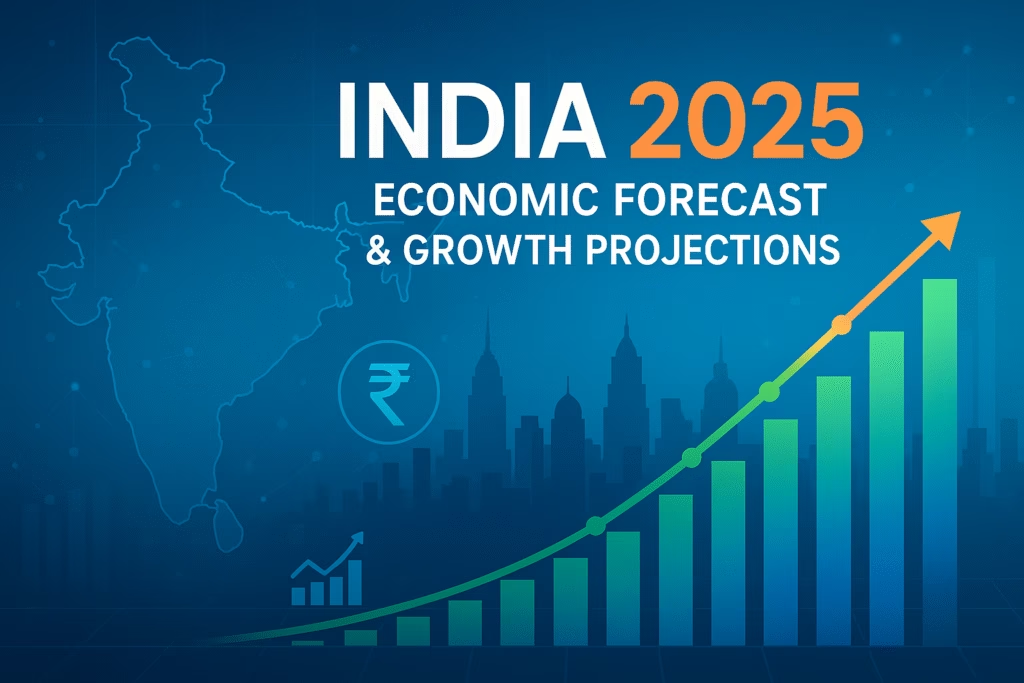## India 2025: Economic Forecast and Growth Projections
India, a burgeoning economic powerhouse, is poised for significant growth in the coming years. As we approach 2025, several factors are converging to shape the nation’s economic trajectory, promising both opportunities and challenges. This article delves into the projected economic landscape of India in 2025, analyzing key drivers and potential obstacles to growth.
Positive Growth Drivers:
Demographic Dividend:
India’s young and growing population presents a significant advantage. A large working-age population fuels consumption and drives innovation, creating a vibrant domestic market. This demographic dividend is expected to peak around 2025, propelling economic expansion.
Digital Transformation:
India’s rapid adoption of digital technologies is revolutionizing various sectors. From fintech and e-commerce to healthcare and education, digitalization is boosting efficiency, enhancing productivity, and creating new economic opportunities. The continued expansion of digital infrastructure and increasing internet penetration will further accelerate this trend.
Government Initiatives:
Government programs like “Make in India” and “Digital India” are aimed at fostering domestic manufacturing, attracting foreign investment, and promoting technological advancement. These initiatives are expected to contribute to long-term economic growth and create a more competitive business environment.
Infrastructure Development:
Significant investments in infrastructure projects, including roads, railways, and ports, are improving connectivity and facilitating trade. This infrastructure push is crucial for unlocking India’s economic potential and attracting further investment.
Growing Middle Class:
The expansion of the Indian middle class is driving consumption and creating demand for a wider range of goods and services. This burgeoning middle class is a major engine of economic growth and is expected to play a crucial role in shaping the consumer market in 2025.
Challenges to Growth:
Job Creation:
While the demographic dividend presents an opportunity, creating sufficient jobs to absorb the growing workforce remains a key challenge. Addressing skill gaps and promoting entrepreneurship are critical for harnessing the potential of the young population.
Inequality:
Despite economic growth, income inequality remains a persistent concern. Bridging the gap between the rich and poor and ensuring inclusive growth is essential for long-term stability and prosperity.
Climate Change:
The impacts of climate change, including extreme weather events and resource scarcity, pose a significant threat to India’s economy. Adapting to climate change and investing in sustainable development are crucial for mitigating these risks.
Geopolitical Uncertainties:
Global geopolitical tensions and trade disputes can impact India’s economic growth. Navigating these uncertainties and maintaining stable international relations are essential for sustained economic progress.
Regulatory Environment:
Streamlining regulations and improving the ease of doing business are crucial for attracting investment and fostering entrepreneurship. Bureaucratic hurdles and complex regulations can hinder economic growth.
2025 Outlook:
Despite the challenges, most experts predict continued robust economic growth for India in 2025. The combination of a favorable demographic profile, rapid digitalization, and government initiatives is expected to propel the economy forward. However, addressing the challenges of job creation, inequality, and climate change is crucial for ensuring sustainable and inclusive growth.
Conclusion:
India’s economic future in 2025 appears promising, with the potential to become a leading global economic power. By leveraging its strengths and addressing its challenges, India can achieve its full economic potential and secure a prosperous future for its citizens. Continued focus on structural reforms, investment in human capital, and sustainable development will be key to realizing this vision.
